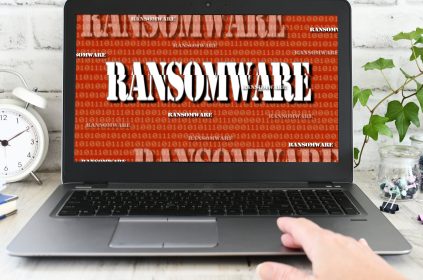Sonya, a small business owner, was busy managing her online boutique when she noticed an influx of new emails in her inbox. Among the usual correspondence from clients and suppliers, she found several emails with subject lines such as “Increase your sales with our marketing services!” and “Get rich quick – learn how to make thousands of dollars a month from home!”
Though Sonya was unfamiliar with the senders, she decided to open one of the emails, curious about the promised marketing services. The message contained a flashy banner and bold text, urging her to click on a link to access exclusive marketing tools that would supposedly boost her business’s online presence and revenue.
Despite her curiosity, Sonya hesitated and decided not to click on the link, suspecting that it might be part of an email spam campaign. She marked the email as spam and continued to receive similar messages over the next few weeks. These unwanted and unsolicited emails not only cluttered her inbox, but they also consumed her time and attention, distracting her from her core business tasks.
Sonya’s experience demonstrates a common encounter with email spam, where messages containing seemingly harmless advertisements or too-good-to-be-true offers flood inboxes. These emails can lead to negative consequences, such as lost productivity, exposure to scams, or even the potential installation of malware if links or attachments are clicked. To minimize the impact of email spam, individuals and businesses must implement effective spam filtering solutions and maintain a cautious approach to dealing with unsolicited messages.
What is Email Spam?
Spam, a term synonymous with unwanted and unsolicited electronic messages, has been a pervasive and persistent challenge since the early days of the internet. As technology advances and communication channels multiply, spam has evolved to inundate email inboxes, social media platforms, instant messaging services, and mobile devices with messages ranging from seemingly harmless advertisements to malicious phishing attempts and scams. The consequences of spam extend beyond mere annoyance, impacting productivity, consuming valuable resources, and posing significant security risks for individuals and organizations alike.
One of the most widely recognized forms of spam is email spam, which presents significant cybersecurity challenges for individuals and organizations worldwide. Unless you have lived under a rock for the last 20 years, you would have encountered countless instances of email spam. These unwanted and unsolicited messages can lead to serious consequences, including data breaches, financial losses, and reputational damage.
Forms of Email Spam:
Spam emails may harbor scams or fraudulent schemes designed to deceive recipients and exploit their trust. These schemes can take many forms, including advance-fee fraud, lottery scams, or counterfeit job offers, all aiming to manipulate victims into surrendering their money or personal information. Often, such emails employ persuasive language and fabricate a sense of urgency to prompt action, further increasing the likelihood of success for the scammer. Email spam encompasses a diverse range of forms, each carrying unique risks and implications for cybersecurity. Here are some of the different types of spam you may witness on any given day.
Advertising Spam:
Advertising spam refers to unsolicited bulk emails disseminating promotions for products, services, or events. Although often dismissed as an annoyance, these emails can pose hidden dangers, such as embedded links directing users to untrustworthy websites. By visiting these sites, users may inadvertently expose themselves to malware, phishing attempts, or other cybersecurity threats.
Phishing Emails:
Phishing emails are carefully crafted, deceptive messages intended to dupe recipients into divulging sensitive information, including login credentials, financial data, or personal details. These emails typically masquerade as legitimate communications from reputable organizations, employing social engineering tactics to manipulate victims into interacting with malicious links or opening infected attachments, which can result in significant security breaches.
Malware Distribution:
Email spam serves as a common vehicle for distributing various types of malware, such as viruses, worms, ransomware, or spyware. When unsuspecting users open malicious attachments or click on links embedded in spam emails, they risk infecting their devices or networks, which can lead to data theft, system compromise, and a host of other detrimental consequences.
Scams and Fraud:
Spam emails may harbor scams or fraudulent schemes designed to deceive recipients and exploit their trust. These schemes can take many forms, including advance-fee fraud, lottery scams, or counterfeit job offers, all aiming to manipulate victims into surrendering their money or personal information. Often, such emails employ persuasive language and fabricate a sense of urgency to prompt action, further increasing the likelihood of success for the scammer.
Mechanics of Email Spam Attacks
Email spam continues to be a pervasive issue in the modern world. The mechanics of email spam encompass various aspects, including the techniques employed by spammers to send mass emails, the tactics used to bypass spam filters, and the methods employed to deceive recipients. Understanding these mechanics can help individuals and organizations develop effective countermeasures to mitigate the risks associated with email spam. Here are some of the spam distribution techniques that exist in the wild.
Botnets:
A botnet is a network of compromised computers (bots) controlled by an attacker (botmaster) without the knowledge of their owners. Spammers use botnets to distribute large volumes of spam emails while concealing their identity and location. By spreading the spamming activity across a vast network of bots, they can bypass rate limits imposed by email service providers and evade detection.
Email Harvesting:
Spammers collect email addresses to target their spam campaigns through a process known as email harvesting. Various methods are used for harvesting email addresses, including web scraping, purchasing email lists, exploiting leaked databases, and using social engineering tactics. These techniques enable spammers to build extensive lists of potential targets for their campaigns.
Bypassing Spam Filters:
Spammers employ a range of tactics to evade spam filters and deliver their messages to recipients’ inboxes. Spammers may obfuscate the content of their messages using various techniques, such as encoding text in images, using HTML tricks, or employing synonyms and alternative phrases. These methods make it more challenging for spam filters to identify the message as spam based on its content. Email spoofing involves forging the sender’s email address to make it appear as if the message is from a legitimate source. Spammers use spoofing to deceive recipients and bypass spam filters that rely on reputation-based filtering. Snowshoe spamming is a technique where spammers distribute their messages across multiple IP addresses, domains, and mail servers to dilute the volume of spam sent from each source. This strategy makes it more difficult for spam filters to identify and block the spam based on the sender’s reputation or IP address.
Deceptive Tactics:
To increase the likelihood of recipients engaging with their messages, spammers use various deceptive tactics which include social engineering, personalization and malware and exploits which we will get into more detail later in this book. Spammers often employ social engineering techniques to manipulate recipients into taking specific actions, such as clicking on a link, opening an attachment, or providing sensitive information. These tactics include creating a sense of urgency, exploiting trust relationships, and impersonating reputable organizations. Personalizing spam emails by including the recipient’s name or other personal information can increase the perceived legitimacy of the message and improve the chances of the recipient interacting with the email. Spammers may use malware or exploits to compromise recipients’ devices, allowing them to collect additional email addresses, launch further spam campaigns, or steal sensitive information.
All in all, the mechanics of email spam involve a complex interplay of distribution techniques, filter evasion tactics, and deceptive methods employed by spammers to maximize the effectiveness of their campaigns. By understanding these mechanics, individuals and organizations can develop targeted strategies to combat email spam and protect their digital assets from the associated cybersecurity risks. So, let’s talk about how we can combat spam next.
Countermeasures to Safeguard Against Spam Email
Email spam remains a significant cybersecurity concern for individuals and organizations, as it can lead to phishing attacks, malware distribution, and various forms of fraud. Implementing effective strategies to safeguard against email spam is crucial for protecting sensitive information and maintaining the integrity of digital systems. This report will detail various measures that both individuals and organizations can adopt to minimize the risks associated with email spam.
Implementing Spam Filters:
Employ advanced spam filtering technologies capable of identifying and blocking spam emails by analyzing content, sender reputation, or other criteria. Integrate these filters with email clients or implement them at the server level to safeguard entire organizations from spam threats. Design custom filters within email clients to automatically route suspicious emails to designated folders or delete them. Base these custom filters on specific keywords, phrases, sender addresses, or other identifiable characteristics that are commonly associated with spam emails.
Email Authentication Protocols:
Adopt email authentication protocols, such as SPF, DKIM, and DMARC, to help authenticate incoming emails and reduce the likelihood of successful phishing and spoofing attempts. These protocols aid in verifying the legitimacy of the sender’s domain and help prevent spammers from forging email addresses.
Secure Email Gateways:
Deploy secure email gateways to examine and filter all inbound and outbound email traffic, thereby offering an extra layer of protection against spam and other email-based threats. These gateways typically include features such as antivirus scanning, advanced threat protection, and data loss prevention to ensure comprehensive email security.
Comprehensive Email Security Policies:
Formulate and enforce a robust email security policy that defines best practices and acceptable use guidelines for employees. This policy should address issues such as handling sensitive information, identifying and reporting suspicious emails, and utilizing secure email communication methods.
Create or Update your Incident Response Plan:
Develop a well-defined incident response plan to manage email-related security incidents or breaches. This plan should ensure that employees understand the appropriate steps to take in case of a suspected or confirmed breach, including reporting procedures and escalation protocols.
Maintaining Software and Systems:
One of the most critical steps in protecting against spam-related cyber threats is ensuring that all software, including email clients, operating systems, and antivirus programs, are regularly updated. Spammers often exploit known vulnerabilities in outdated software to infiltrate systems and deliver malicious payloads. By keeping software up-to-date with the latest security patches, users can significantly reduce the attack surface available to spammers, thereby safeguarding their systems against emerging threats. Furthermore, timely updates contribute to an improved overall security posture, as they help address potential weaknesses that could be exploited in coordinated spam campaigns or targeted attacks.
To further bolster defenses against malware distributed through email spam, it is essential to adopt comprehensive endpoint security solutions, such as antivirus software and intrusion prevention systems. These security solutions serve to monitor, detect, and respond to potential threats targeting individual devices or entire networks. By providing real-time protection against various forms of malware, including viruses, worms, ransomware, and spyware, endpoint security solutions can effectively mitigate the risks associated with spam emails.
In addition to monitoring and detection capabilities, endpoint security solutions often include advanced features, such as behavioral analysis and machine learning algorithms, which can identify and block new or previously unknown malware strains. By leveraging these advanced capabilities, individuals and organizations can stay ahead of evolving spam threats and ensure the integrity and confidentiality of their digital assets and data.
User awareness of Spam Email:
Educating users about the risks associated with email spam and the importance of adopting safe email practices is crucial in combating spam-related threats. One effective approach to achieve this is through the design and implementation of email security awareness programs. These programs serve to inform users about the common tactics used by spammers, the potential consequences of falling victim to email spam, and the recommended preventative measures to minimize risks. By raising awareness and fostering a culture of security-mindedness, individuals and organizations can better protect themselves from spam-related cyber threats.
In addition to awareness programs, regular training sessions play a vital role in equipping users with the skills and knowledge necessary to recognize and handle suspicious emails effectively. These sessions should cover a range of topics, such as identifying phishing attempts, detecting malicious attachments, and discerning fraudulent links. Moreover, they should outline best practices for reporting suspected spam emails to the appropriate authorities or IT departments. By engaging in continuous education and training, users can stay up-to-date with the latest spam trends and tactics, enhancing their ability to identify and respond to potential threats in a timely and effective manner.
Encourage users to exercise caution when dealing with unsolicited or suspicious emails by avoiding opening attachments or clicking on links from unknown or untrusted sources. This practice reduces the likelihood of falling victim to phishing attacks or inadvertently downloading malware.
Safeguarding against email spam requires a comprehensive approach that combines technological solutions, user education, and robust security policies. By implementing these strategies, both individuals and organizations can significantly reduce the risks associated with email spam, protecting their sensitive information and ensuring the continued security and integrity of their digital systems.
















